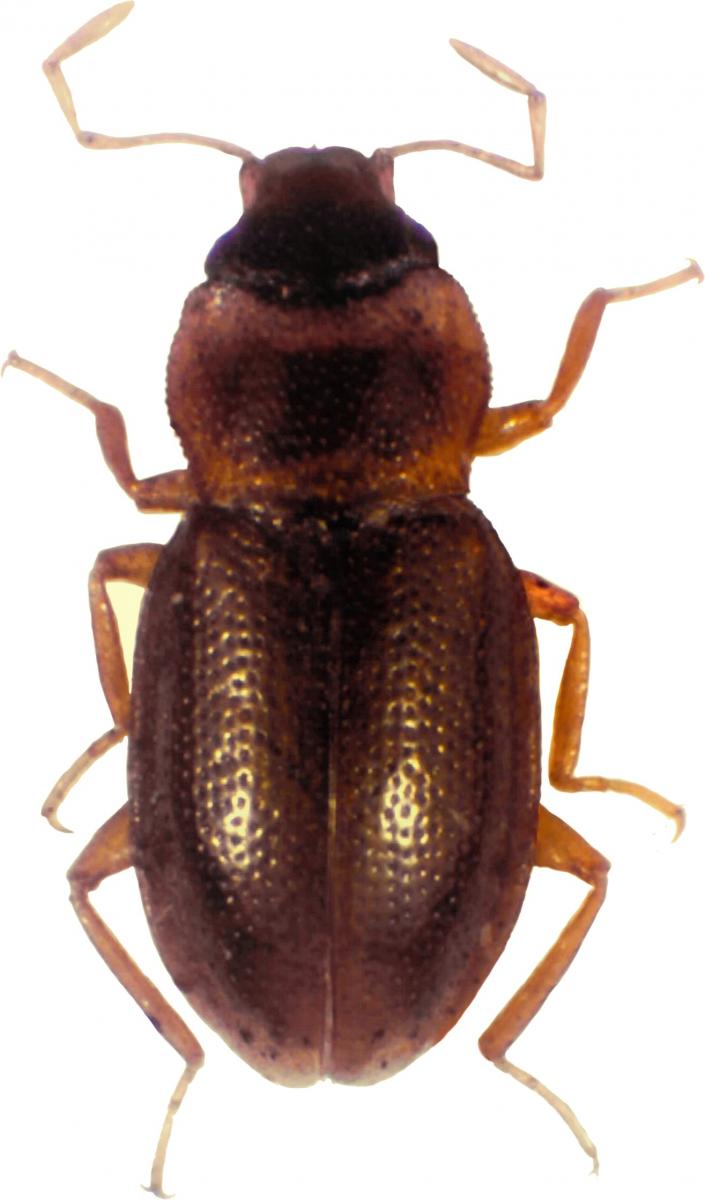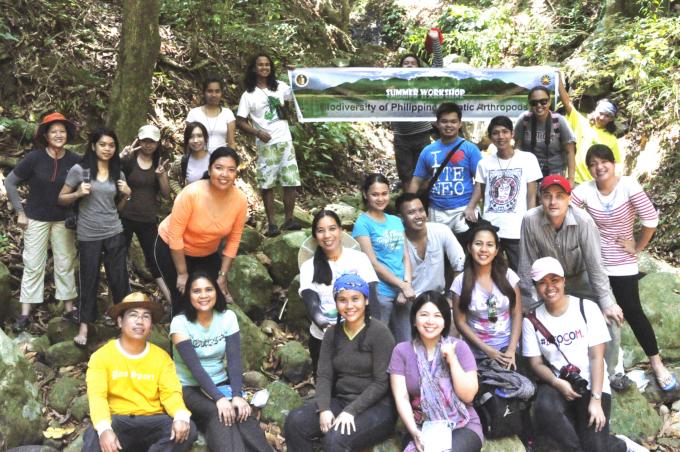A new beetle species discovered in the Ateneo de Manila University campus
Metro Manila – the world's 10th largest megacity and 6th largest conurbation, based on official statistics – is not a place where one would normally expect to discover new species, even in a country that is known as a biodiversity hotspot.
In an 83-hectare green island amidst the unnatural ocean of countless man-made edifices, researchers of the Ateneo de Manila University have discovered a tiny new species of aquatic beetle, aptly named Hydraena ateneo. It was named after the University, a 154-year-old Jesuit-run institution that is recognized as one of the premier universities in the Philippines and in the region.
The discovery of this new species is just timely, given that the university's Department of Biology is celebrating its 50th anniversary this year. Ronald Cruz, the Department's Undergraduate Student Coordinator, announces: "A Grand Alumni Homecoming and anniversary party will be held in November this year. The Department has produced over 1000 graduates during the last half century, many of them assuming prime positions in academic research, NGOs, private business, and especially medicine. The Ateneo Department of Biology currently offers Life Science and Biology programs for undergraduates."
Recently, the Atenean Biologists have strengthened their profile in taxonomy and biodiversity research. Several new species of arthropods were discovered from the country and beyond by faculty members of the Department.

The new "Ateneo Long-palped Water Beetle" (Hydraena ateneo) was discovered during a field training in November 2012 when Life Science students and a faculty member of the Department of Biology sampled small creeks, ponds, and pools in wooded areas within their sprawling university campus. The group found seven species of water beetles, of which one was a new record for the entire island of Luzon and another was the new species.
Arielle Vidal, at the time of the training a student enrolled in the Department's B.S. Life Sciences program, says: "I was so amazed that there are new species even in the Ateneo Campus in the middle of Manila. Then I was sure that I wanted to write my thesis on a taxonomic topic." Kimberly Go, her thesis partner, adds: "Then we pushed through and investigated a remote river catchment in Mindoro. We found several new species of the same genus there, too."
Their thesis adviser, Dr. Hendrik Freitag, explains: "The Long-palped Water Beetles (genusHydraena) are in fact one of the most overlooked and diverse genera of aquatic beetles. Based on documents of the Ateneo Archives, the area in Quezon City was grasslands before the Ateneo campus has moved into these premises in 1952. Such conditions were unsuitable for species that are found recently. After the Jesuit community has facilitated the re-establishment of a tree cover in the last 50 years, and the small creeks began to flow again, those aquatic species must have re-colonized the area. However, the fact that we found the new species first here in the campus does not mean it is restricted to this area."

Clister Pangantihon and Dr. Ronald Lagat, both facilitators of the "Philippine Aquatic Biodiversity Workshop" held at the Ateneo earlier this year confirm: "We found Hydraena ateneo also in the neighboring Province of Cavite during our workshop."
The study has shown that small patches of semi-natural habitats amidst the densely populated and highly urbanized capital region can accommodate an astonishing assemblage of species. This will hopefully be an inducement to protect and extend such islands of urban biodiversity in the cities.
Nevertheless, this should not lead to the illusion that the ongoing dramatic loss of biodiversity in the Philippines can be reversed. A large proportion of endemic organisms are closely associated with primary forests. Therefore, it should be an ultimate priority for nature conservation to protect the last remaining rainforests in the country. The Ateneo Department of Biology will continue its efforts in biodiversity and conservation research to support communities, government authorities and NGOs in this challenging endeavour.
The international scientific journal Zookeys has published the paper about the unusual discovery in its latest issue [329: 9–21 (2013)].
